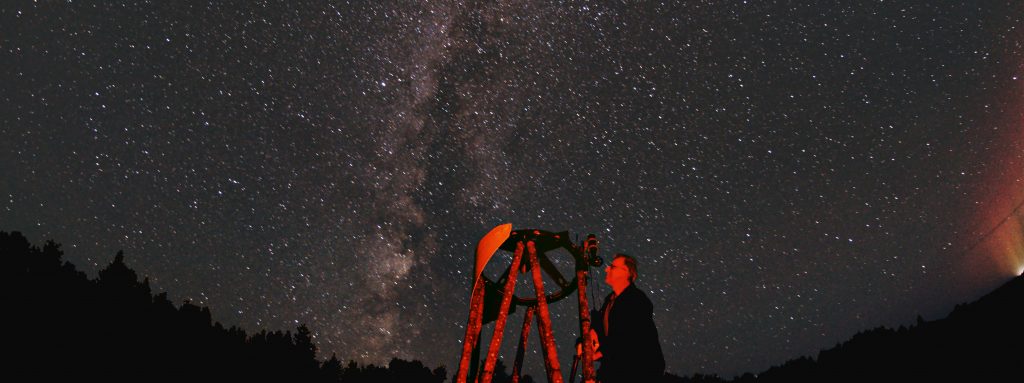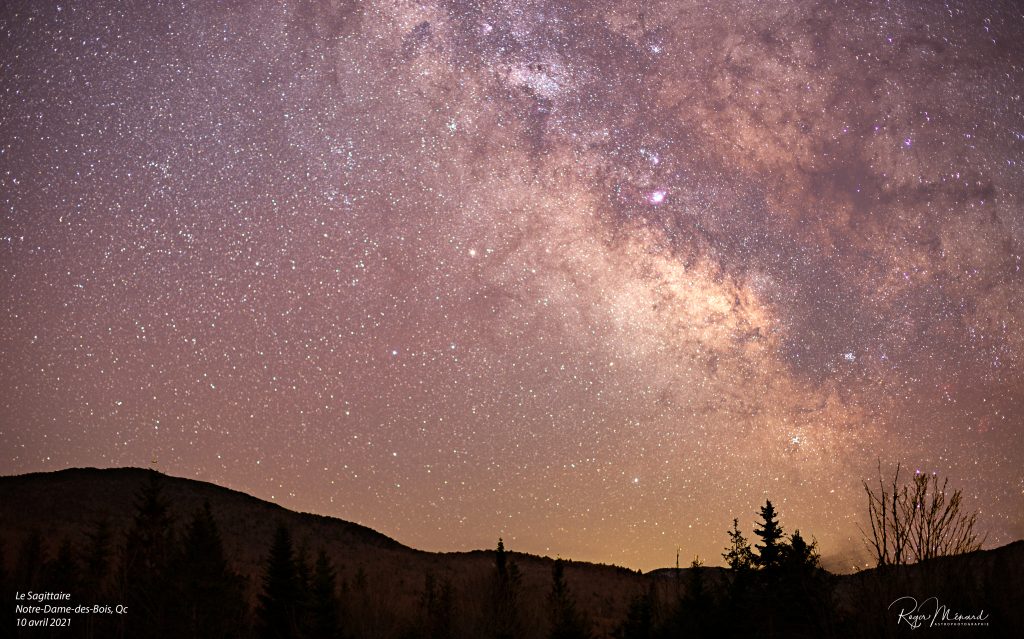At the end of the afternoon, when the sun goes down on the horizon and the sky begins to boast of a deep royal blue, announcing a night twinkled with stars, the feverishness takes hold of me and my heartbeat starts to accelerate. I can hear but I don’t listen and my mind is elsewhere. I can already imagine the celestial conquests I will make with my telescope and my binoculars when the last gleams of twilight have given way to the thousands of distant suns and the Milky Way that will sprinkle the sky. I am trying to calm myself down by looking at my planetarium software which will help me select the beautiful nebulae and galaxies that I will be admiring in a few hours. But the sun takes its time going down below the horizon and makes me languish. There is a reason why we settled in Ste-Sophie, in the lower Laurentians. The sky is considerably darker than in Montreal and Laval. And the yard is big enough that I have a clear horizon. But that doesn’t make the sun go down any faster …

Finally, darkness has now completely set in. The endless wait is over. The wind has died down, and you can almost hear the stars twinkling even though a few dogs are barking in the distance. I start by letting my gaze wander. I mentally draw the constellations by identifying the brightest stars which have over time become familiar friends.They were there yesterday; they will be there tomorrow. We can rely on their lifespan of hundreds of millions of years. Vega, always the first to appear. Deneb, Altair, the summer triangle that serves as our starting point. We poor humans are very fleeting in the infinity of the universe. They light up one after the other, like in a fully orchestrated ballet.
It’s not really dark anymore. After about 30 minutes, my eyes are now adjusted to the dark and I can make out my telescope and its accessories that are patiently waiting to be put to use. If necessary, I will use my flashlight with red bulb which does not affect the adaptation of my eyes at night. But, for now, I scan the sky and assess its quality, transparency, and turbulence. I can see the great Andromeda galaxy, the farthest object that can be seen with the naked eye at 2.5 million light years. And yet she is in our backyard, our neighbor. My telescope will allow me later to spot some that are several hundred million light years away. I look north and can make out all the stars in Ursa Minor, at the end of which is the North Star. It’s a good sign. The sky is very transparent.
I start the electronic system that will be used to point my telescope. All is well and the drive motor which follows the movement of the stars, in fact which counteracts the rotation of the Earth, comforts me with its reassuring and familiar hiss and is the only sound that occasionally disturbs the silence of the night. I am now in my bubble. I am pointing at Albireo, a beautiful double star with a golden main sun and a beautiful powder blue satellite star. What a beautiful contrast! My brain allows itself a little getaway. I imagine myself on a planet that is part of this solar system with a golden sun on one side and a blue sun on the other. How weird it must be! And yet, this multi-star system is not unique. There are millions more, triple, even quadruple star systems. And to think that most stars are at the center of a solar system like ours, with one or more planets orbiting around. Impossible that there isn’t some life form somewhere among this swarm of stars.

I’m aiming my telescope at Messier 57, the Ring Nebula in Lyra. A small ring of grayish smoke visually, but red and blue when photographed. It is a star that burned all of its hydrogen and ejected its outer gases, emitting energetic pulses to form this ring about 7,000 years ago. Fascinating to see this little ring floating. It feels like a movie but it’s real. It’s there in front of me, in my telescope eyepiece.
All the stars that we can see, whether with the naked eye or with a telescope, are part of our own galaxy, the Milky Way. But there are billions of other galaxies across the universe, each containing billions of stars. Enough make us dizzy. While observing a galaxy through a telescope, I sometimes find myself thinking that there may be someone, or something, in this galaxy who is also pointing some instrument at us and wondering if anyone lives in our beautiful galaxy. Maybe. On a cosmic scale, humans have only just appeared on Earth. And photons (light) take millions of years to travel through the deep void from one galaxy to another. Will we still be here in a million years? We are sometimes doubtful. But for now, I am comfortable in my warm clothes, in the silence of the night, communing with the universe. And that’s all that matters to me.
